by Moe | Apr 18, 2013 | Gnosis, Meaning of Symbols, Meaning of Words
In the world we currently live in, there is a law of universal order that governs all nature and man. This law is called by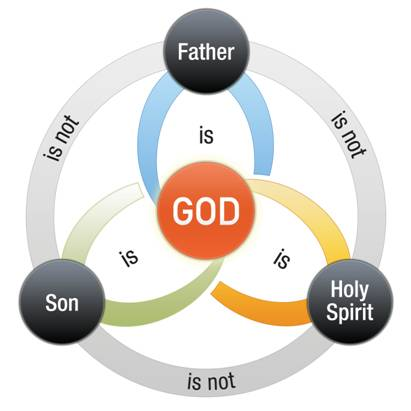 such names as the ‘Trinity,’ The Law of Three Forces,’ or the Three Pure Ones. The number three has been used since ancient times to describe the fundamental attributes, principles or personalities of God, the forces of nature, and even man who is truly a tri-fold intelligence. The number 3 is the power of all creation which uses the law of three forces to create; and as the great mathematician Pythagoras had said, “all is numbers”, and when he says ‘all’, that definitely includes us humans.
such names as the ‘Trinity,’ The Law of Three Forces,’ or the Three Pure Ones. The number three has been used since ancient times to describe the fundamental attributes, principles or personalities of God, the forces of nature, and even man who is truly a tri-fold intelligence. The number 3 is the power of all creation which uses the law of three forces to create; and as the great mathematician Pythagoras had said, “all is numbers”, and when he says ‘all’, that definitely includes us humans.
These 3 Forces of universal law are: active, passive and mutual or neutral, which includes everything that is made within our universe. The equilibrium of the tri-fold intelligence, or what is also called the Law of Three Forces, or in the Christian religion is called the Trinity. The English word “Trinity” is derived from Latin “Trinitas,” meaning “the number three, a triad”. This abstract noun is formed from the adjective “trinus” (three each, threefold, triple), and as the word “unitas” which is the abstract noun formed from “unus” (one). (more…)
Moe is the founder of GnosticWarrior.com. He is a father, husband, author, martial arts black belt, and an expert in Gnosticism, the occult, and esotericism.
by Moe | Aug 14, 2012 | History of the Brotherhood, Meaning of Symbols
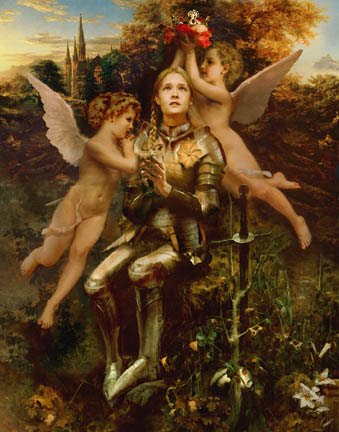 “I am prepared here is my keen edged sword, Decked with five Flower-de-luces on each side.” – Joan of Arc
“I am prepared here is my keen edged sword, Decked with five Flower-de-luces on each side.” – Joan of Arc
The facts are that when you see an ancient symbol that is used today by a country on their flag or royalty via their coat of arms that can also be traced back to ancient civilizations, you can be certain that it is the very same royal brotherhood using the same old royal symbols to honor their ancestors. It is really that royally simple.
The fleur-de-lis or fleur-de-lys in French literally means “lily flower” (fleur means flower, and lis means lily or iris). However, let me state that when you see this symbol emblazoned today on various flags or engraved on royal crowns, the fleur-de-lis does not represent the lily flower, but the Trinity of the Brotherhood. For it is and emblem of a blood line of divine majesty and the symbol of a particular royal Brotherhood that had originated long before the foundation of Rome, or the founding royal houses of France.
The fleur-de-lis is modeled after the lotus in Egypt that was associated with the psychotropic Nile Lily. The Nile is where this same brotherhood had originated. Therefor it is only fitting that they would choose an ancient Egyptian symbol for “plant” meaning “Tree of Life” that was three sacred lotus lilies as their symbol. It is the fleur-de-lis that has now replaced he Lily as a symbol of royalty of this same said Brotherhood to honor the three glorious lilies of Jesus, Mary, and Joseph.
The Nile is where this same brotherhood had originated. Therefor it is only fitting that they would choose an ancient Egyptian symbol for “plant” meaning “Tree of Life” that was three sacred lotus lilies as their symbol. It is the fleur-de-lis that has now replaced he Lily as a symbol of royalty of this same said Brotherhood to honor the three glorious lilies of Jesus, Mary, and Joseph.
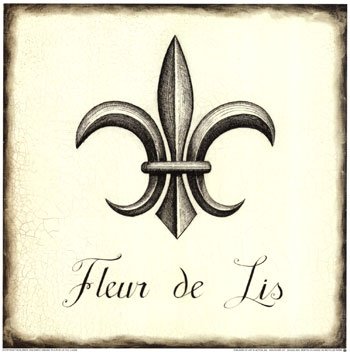
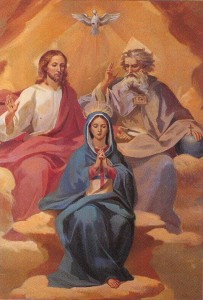 The blood line of the the Blessed Trinity who is the Father, Ptolemy XIV who is the biblical allegorical Joseph, the Son Augustus Caesar (Jesus Christ), and the ever-blessed Cleopatra VII who is the allegorical Virgin Mary and Mother of God. Jesus, the Son of God incarnate being the first; the second to the ever-blessed Virgin Mary, Mother of God; and the third to St. Joseph, spouse of the blessed Virgin Mary, and foster-father to the Son of God.
The blood line of the the Blessed Trinity who is the Father, Ptolemy XIV who is the biblical allegorical Joseph, the Son Augustus Caesar (Jesus Christ), and the ever-blessed Cleopatra VII who is the allegorical Virgin Mary and Mother of God. Jesus, the Son of God incarnate being the first; the second to the ever-blessed Virgin Mary, Mother of God; and the third to St. Joseph, spouse of the blessed Virgin Mary, and foster-father to the Son of God.
The white fleur-de-lis, often called the Annunciation of the Blessed Virgin Mary, the flower of the Queen of Heaven, the Blessed Virgin Mary and a symbol of purity or whiteness. This day is held in like reverence by the Latin, Greek and Reformed Churches everywhere, as the day when the Angel brought the happy tidings to the Blessed Virgin Mary of the Incarnation of the Son of God as told in the Gospel of St. Luke 1 28, “And coming in, he said to her, “Greetings, favored one! The Lord is with you.”
Catholic.com says under “Full of Grace,” that “These blessings included her role as the New Eve (corresponding to Christs role as the 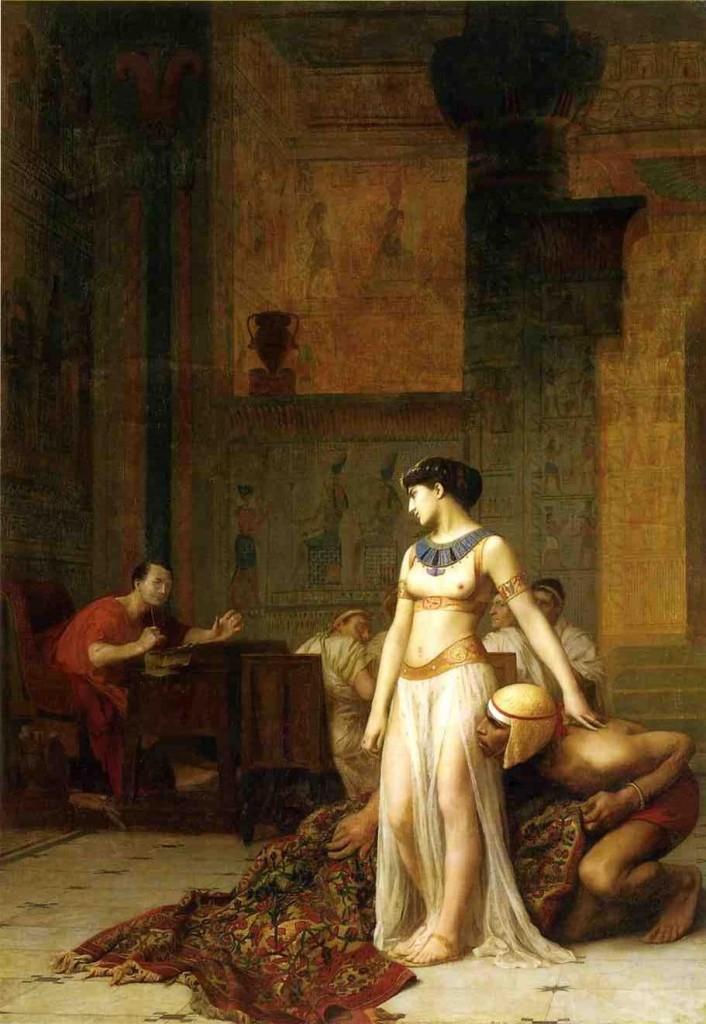 New Adam), her Immaculate Conception, her spiritual motherhood of all Christians, and her Assumption into heaven.” Hence, the ever-blessed Cleopatra VII is the spiritual mother of all Christians and the New Eve of the New Testament. Augustus Caesar is the New Christ and the New Adam. When Catholics recite The Hail Mary which says “Hail Mary, full of grace. The Lord is with thee. Blessed art thou amongst women, and blessed is the fruit of thy womb, Jesus. Holy Mary, Mother of God, pray for us sinners, now and at the hour of our death, Amen.”
New Adam), her Immaculate Conception, her spiritual motherhood of all Christians, and her Assumption into heaven.” Hence, the ever-blessed Cleopatra VII is the spiritual mother of all Christians and the New Eve of the New Testament. Augustus Caesar is the New Christ and the New Adam. When Catholics recite The Hail Mary which says “Hail Mary, full of grace. The Lord is with thee. Blessed art thou amongst women, and blessed is the fruit of thy womb, Jesus. Holy Mary, Mother of God, pray for us sinners, now and at the hour of our death, Amen.”
Hence, when the Hail Mary prayer is said, it is done for the Mary and her seeds (children/blood line) of the Blessed Trinity represented by the fleur-de-lis who the Virgin Mary is the New Eve via the New Testament in this 6th Age. This Mary and Eve is no other than Cleopatra VII who you will also find her under other names such as Mariamne I, and she is also called Mariamne the Hasmonean.
Monsieur Sonnini discovered an Egyptian statue, holding a sceptre, which terminated in a fleur-de-lis. The Blessed Virgin Mary, the last Pharaoh of Egypt, Cleopatra VII was of the family of Ptolemy and had always appeared in public clothed in a robe sacred to Isis, her head adorned with a crown of golden lily leaves. Cleopatra was a descendant of the Ptolemaic dynasty who are an ancient Greek family sometimes also known as the Lagids or Lagides who descend from Ptolemy I’s father, Lagus. After the reign of Alexander the Great, they would be known as the Macedonian Greeks or the Hasmoneans, Maccabees, or Asmonians whose family emblem is also an eagle. This royal family ruled during the Ptolemaic Empire in Egypt which was called the Hellenistic period. In 305 BC, he declared himself King Ptolemy I, later known as “Soter” (savior). What this means is that this particular family who wrote both the Old and New Testaments, had made their Kings into Saviors, Messiahs, Christs and the KING OF KINGS.
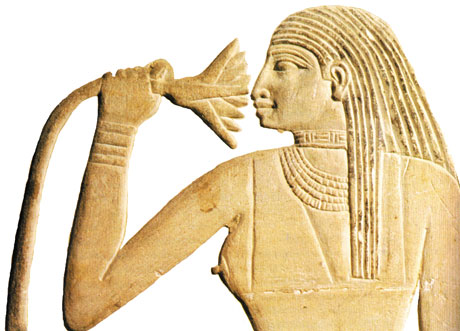 Their rule lasted for 275 years, from 305 BC to the time of Cleopatra VII in 30 BC when Rome united with Egypt under the Savior and Messiah, Augustus Caesar. This same family you will find ancient times that his family had lived amongst various peoples such as the Assyrians, Greeks, Persians, Romans and the Egyptians. You can even trace this symbol into ancient Egypt depicted in artwork and also the headdresses of the Egyptian sphinxes.
Their rule lasted for 275 years, from 305 BC to the time of Cleopatra VII in 30 BC when Rome united with Egypt under the Savior and Messiah, Augustus Caesar. This same family you will find ancient times that his family had lived amongst various peoples such as the Assyrians, Greeks, Persians, Romans and the Egyptians. You can even trace this symbol into ancient Egypt depicted in artwork and also the headdresses of the Egyptian sphinxes.
You will find this symbol throughout history as an ornament on the crowns, scepters, thrones, seals, coins, etc. of not only French Kings, but also on Greek, Roman, German, English, Spanish, Egyptian, Syrian and Babylonian Kings.
Moe is the founder of GnosticWarrior.com. He is a father, husband, author, martial arts black belt, and an expert in Gnosticism, the occult, and esotericism.
by Moe | Sep 1, 2011 | Ecclesiastical History of England
AT this time he received a letter from Pope Boniface exhorting him to embrace the faith, which was as follows:
COPY OF THE LETTER OF THE MOST BLESSED AND APOSTOLIC POPE OF THE CHURCH OF THE CITY OF ROME, BONIFACE, ADDRESSED TO THE ILLUSTRIOUS EDWIN, KING OF THE ENGLISH.
“To the illustrious Edwin, king of the English, Bishop Boniface, the servant of the servants of God. Although the power of the Supreme Deity cannot be expressed by the function of human speech, seeing that, by its own greatness, it so consists in invisible and unsearchable eternity, that no keenness of wit can comprehend or express how great it is; yet inasmuch as His Humanity, having opened the doors of the heart to receive Himself, mercifully, by secret inspiration, puts into the minds of men such things as It reveals concerning Itself, we have thought fit to extend our episcopal care so far as to make known to you the fulness of the Christian faith; to the end that, bringing to your knowledge the Gospel of Christ, which our Saviour commanded should be preached to all nations, we might offer to you the cup of the means of salvation.
“Thus the goodness of the Supreme Majesty, which, by the word alone of His command, made and created all things, the heaven, the earth, the sea, and all that in them is, disposing the order by which they should subsist, hath, ordaining all things, with the counsel of His co-eternal Word, and the unity of the Holy Spirit, made man after His own image and likeness, forming him out of the mire of the earth; and granted him such high privilege of distinction, as to place him above all else; so that, preserving the bounds of the law of his being, his substance should be established to eternity. This God,—Father, Son, and Holy Ghost, the undivided Trinity,—from the east unto the west, through faith by confession to the saving of their souls, men worship and adore as the Creator of all things, and their own Maker; to Whom also the heights of empire and the powers of the world are subject, because the pre-eminence of all kingdoms is granted by His disposition. It hath pleased Him, therefore, in the mercy of His loving kindness, and for the greater benefit of all His creatures, by the fire of His Holy Spirit wonderfully to kindle the cold hearts even of the nations seated at the extremities of the earth in the knowledge of Himself.
“For we suppose, since the two countries are near together, that your Highness has fully understood what the clemency of our Redeemer has effected in the enlightenment of our illustrious son, King Eadbald, and the nations under his rule; we therefore trust, with assured confidence that, through the long-suffering of Heaven, His wonderful gift will be also conferred on you; since, indeed, we have learnt that your illustrious consort, who is discerned to be one flesh with you, has been blessed with the reward of eternity, through the regeneration of Holy Baptism. We have, therefore, taken care by this letter, with all the goodwill of heartfelt love, to exhort your Highness, that, abhorring idols and their worship, and despising the foolishness of temples, and the deceitful flatteries of auguries, you believe in God the Father Almighty, and His Son Jesus Christ, and the Holy Ghost, to the end that, believing and being released from the bonds of captivity to the Devil, you may, through the co-operating power of the Holy and undivided Trinity, be partaker of the eternal life.
“How great guilt they lie tinder, who adhere in their worship to the pernicious superstition of idolatry, appears by the examples of the perishing of those whom they worship. Wherefore it is said of them by the Psalmist, ‘All the gods of the nations are devils,’ but the Lord made the heavens.’ And again, ‘Eyes have they, but they see not; they have ears, but they hear not; noses have they, but they smell not; they have hands, but they handle not; feet have they, but they walk not. Therefore they are made like unto those that place the hope of their confidence in them.’ For how can they have power to help any man, that are made out of corruptible matter, by the hands of your inferiors and subjects, and on which, by employing human art, you have bestowed a lifeless similitude of members? which, moreover, unless they be moved by you, will not be able to walk; but, like a stone fixed in one place, being so formed, and having no understanding, sunk in insensibility, have no power of doing harm or good. We cannot, therefore, by any manner of discernment conceive how you come to be so deceived as to follow and worship those gods, to whom you yourselves have given the likeness of a body.
Moe is the founder of GnosticWarrior.com. He is a father, husband, author, martial arts black belt, and an expert in Gnosticism, the occult, and esotericism.
by Moe | Aug 31, 2011 | Ecclesiastical History of England
ABOUT this time, Theodore being informed that the faith of the Church at Constantinople was much perplexed by the heresy of Eutyches, and desiring that the Churches of the English, over which he presided, should remain free from all such taint, convened an assembly of venerable bishops and many learned men, and diligently inquired into the faith of each. He found them all of one mind in the Catholic faith, and this he caused to be committed to writing by the authority of the synod as a memorial, and for the instruction of succeeding generations; the beginning of which document is as follows:
“In the name of our Lord and Saviour Jesus Christ, under the rule of our most pious lords, Egfrid, king of of the Northumbrians, in the tenth year of his reign, the seventeenth of September, the eighth indiction; Ethelred, king of the Mercians, in the sixth year of his reign; Aldwulf king of the East Angles, in the seventeenth year ofhis reign; and Hlothere, king of Kent, in the seventh year of his reign, Theodore, by the grace of God, archbishop of the island of Britain, and of the city of Canterbury, being president, and the other venerable bishops of the island of Britain sitting with him, the holy Gospels being laid before them, at the place which, in the Saxon tongue, is called Haethfelth,we conferred together, and set forth the right and orthodox faith, as our Lord Jesus Christ in the flesh delivered the same to His disciples, who beheld His Presence and heard His words, and as it is delivered by the creed of the holy fathers, and by all holy and universal synods in general, and by the consent of all approved doctors of the Catholic Church. We, therefore, following them, in piety and orthodoxy, and professing accordance with their divinely inspired doctrine, do believe agreeably to it, and with the holy fathers confess the Father, and Son, and Holy Ghost, to be properly and truly a Trinity consubstantial in Unity, and Unity in Trinity, that is, one God in three Subsistences or consubstantial persons, of equal glory and honour.”
And after much more of the same sort, appertaining to the confession of the right faith, this holy synod added to its document, “We acknowledge the five holy and general councils of the blessed fathers acceptable to God; that is, of the 318 assembled at Nicaea, against the most impious Anus and his tenets; and at ConstantinopIe, of 150, against the madness of Macedonius and Eudoxius, and their tenets; and at Ephesus, for the first time, of 200, against the most wicked Nestorius, and his tenets; and at Chalcedon, of 630, against Eutyches and Nestorius, and their tenets; and again, at Constantinople, in a fifth council, in the time of Justinian the younger,against Theodorus, and the epistles of Theodoret and Ibas, and their tenets in opposition to Cyril.” And again a little lower, “the synod held in the city of Rome, in the time of the blessed Pope Martin,in the eighth indiction, and in the ninth year of the most pious Emperor Constantine,we also acknowledge. And we glorify our Lord Jesus Christ, as they glorified Him, neither adding aught nor taking away; anathematizing with hearts and lips those whom they anathematized, and receiving those whom they received; glorifying God the Father, Who is without beginning, and His only-begotten Son, begotten of the Father before the worlds, and the Holy Ghost proceeding ineffably from the Father and the Son, even as those holy Apostles, prophets, and doctors, whom we have above-mentioned, did declare. And all we, who, with Archbishop Theodore, have thus set forth the Catholic faith, thereto subscribe.”
Next: Of John, the precentor of the Apostolic see, who came into Britain to teach. [680 A. D.]
Index
Moe is the founder of GnosticWarrior.com. He is a father, husband, author, martial arts black belt, and an expert in Gnosticism, the occult, and esotericism.
by Moe | Aug 31, 2011 | Ecclesiastical History of England
IT seems fitting to insert in this history a hymn concerning virginity, which we composed in elegiac verse many years ago, in praise and honour of the same queen and bride of Christ, and therefore truly a queen, because the bride of Christ; and to imitate the method of Holy Scripture, wherein many songs are inserted in the history, and these, as is well known, are composed in metre and verse.
“Trinity,Gracious, Divine, Who rulest all the ages; favour my task, Trinity, Gracious, Divine.
“Let Maro sound the trumpet of war, let us sing the gifts of peace; the gifts of Christ we sing, let Maro sound the trumpet of war.
“Chaste is my song, no rape of guilty Helen; light tales shall be told by the wanton, chaste is my song.
“I will tell of gifts from Heaven, not wars of hapless Troy; I will tell of gifts from Heaven, wherein the earth is glad.
“Lo! the high God comes to the womb of a holy virgin, to be the Saviour of men, lo! the high God comes.
“A hallowed maid gives birth to Him Who gave the world its being; Mary, the gate of God, a maiden gives Him, birth.
“The company of her fellows rejoices over the Virgin Mother of Him Who wields the thunder; a shining virgin band, the company of her fellows rejoices.
“Her honour has made many a blossom to spring from that pure shoot, virgin blossoms her honour has made to spring.
“Scorched by the fierce flames, the maiden Agatha yielded not; in like manner Eulalia endures, scorched by the fierce flames.
“The lofty soul of chaste Tecla overcomes the wild beasts; chaste Euphemia overcomes the accursed wild beasts.
“Agnes joyously laughs at the sword, herself stronger than steel, Cecilia joyously laughs at the foemen’s sword.
“Many a triumph is mighty throughout the world in temperate hearts; throughout the world love of the temperate life is mighty.
“Yea, and our day likewise a peerless maiden has blessed; peerless our Ethelthryth shines.
“Child of a noble sire, and glorious by royal birth, more noble in her Lord’s sight, the child of a noble sire.
“Thence she receives queenly honour and a sceptre in this world; thence she receives honour, awaiting higher honour above.
“What need, gracious lady, to seek an earthly lord, even now given to the Heavenly Bridegroom?
“Christ is at hand, the Bridegroom (why seek an earthly lord?) that thou mayst follow even now, methinks, in the steps of the Mother of Heaven’s King, that thou too mayst be a mother in God.
“Twelve years she had reigned, a bride dedicated to God, then in the cloister dwelt, a bride dedicated to God.
“To Heaven all consecrated she lived, abounding in lofty deeds, then to Heaven all consecrated she gave up her soul.
“Twice eight Novembers the maid’s fair flesh lay in the tomb, nor did the maid’s fair flesh see corruption in the tomb.
“This was Thy work, O Christ, that her very garments were bright and undefiled even in the grave; O Christ, this was Thy work.
“The dark serpentflies before the honour due to the holy raiment; disease is driven away, and the dark serpent flies.
Rage fills the foe who of old conquered Eve; exultant the maiden triumphs and rage fills the foe.
“Behold, O bride of God, thy glory upon earth; the glory that awaits thee in the Heavens behold, O bride of God.
“In gladness thou receivest gifts, bright amidst the festal torches; behold! the Bridegroom comes, in gladness thou receivest gifts.
“And a new song thou singest to the tuneful harp; a new-made bride, thou exultest in the tuneful hymn.
“None can part her from them which follow the Lamb enthroned on high, whom none had severed from the Love enthroned on high.”
Next: How Bishop Theodore made peace between the kings Egfrid and Etheired. [679 A. D.]
Index
Moe is the founder of GnosticWarrior.com. He is a father, husband, author, martial arts black belt, and an expert in Gnosticism, the occult, and esotericism.
 such names as the ‘Trinity,’ The Law of Three Forces,’ or the Three Pure Ones. The number three has been used since ancient times to describe the fundamental attributes, principles or personalities of God, the forces of nature, and even man who is truly a tri-fold intelligence. The number 3 is the power of all creation which uses the law of three forces to create; and as the great mathematician Pythagoras had said, “all is numbers”, and when he says ‘all’, that definitely includes us humans.
such names as the ‘Trinity,’ The Law of Three Forces,’ or the Three Pure Ones. The number three has been used since ancient times to describe the fundamental attributes, principles or personalities of God, the forces of nature, and even man who is truly a tri-fold intelligence. The number 3 is the power of all creation which uses the law of three forces to create; and as the great mathematician Pythagoras had said, “all is numbers”, and when he says ‘all’, that definitely includes us humans.






